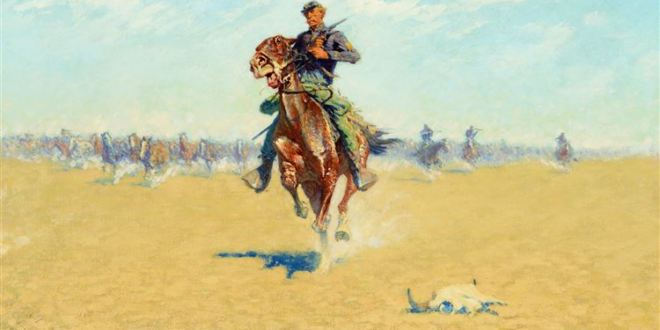Frederic Remington was a renowned American painter, sculptor, and illustrator who lived from 1861 to 1909. He is widely known for portraying the American West, capturing the action, beauty, and drama of the cowboy and Native American cultures. Born in Canton, New York, Remington grew up in a family that valued art and nature. He was exposed to various art forms from a young age, such as wood carving, clay modeling, and painting.
In 1880, he went to Yale University to study art, but he found himself drawn to the natural world and increasingly focused on the American West. Remington’s art is celebrated for its realistic portrayals of the American West. His paintings often feature cowboys, horses, and Native Americans, as well as landscapes and other scenes of the Old West. He was also a prolific illustrator, creating hundreds of illustrations for popular magazines such as Harper’s Weekly and Collier’s.
His career
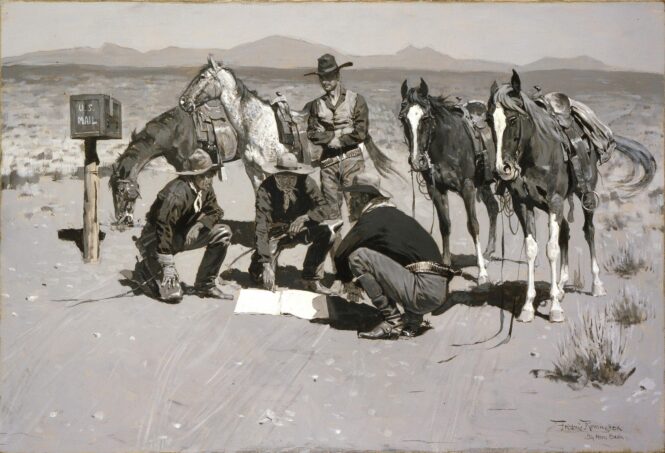
During his twenties and thirties, Remington traveled extensively throughout the American West, sketching and painting the landscapes and people he encountered. He began his career as an illustrator, creating realistic depictions of the American West for popular magazines. His artwork was characterized by attention to detail and dramatic composition that conveyed the power and majesty of the West.
His illustrations were widely admired for their ability to capture the essence of Western life, featuring cowboys, Native Americans, and soldiers in battle. He also depicted landscapes, wildlife, and scenes of everyday life on the frontier. His illustrations were not only artistically significant but also historically important, as they helped to shape the public’s perception of the American West. Throughout his career, Remington was recognized as one of the most important American artists of his time.
Learn about Frederic Remington’s art
The artist’s work had a significant influence on American culture, with his images becoming iconic representations of the American spirit of the time. In addition to his illustrations, famous artist Frederic Remington was also a skilled painter. His paintings often depicted the same subjects as his illustrations but with greater depth and detail.
He favored a bold, impressionistic style, which was characterized by loose brushstrokes and vivid use of color. Fredric Remington’s night paintings are some of his most iconic and powerful works. They capture the drama, danger, and beauty of the American West and showcase Remington’s skill in using light and shadow to create compelling images.
His paintings were exhibited at galleries throughout the United States, and he was awarded several prizes for his work, including a gold medal at the Paris Exposition of 1900.
Remington’s most famous works, however, were his bronze sculptures. He began sculpting in the late 1890s and quickly gained a reputation for capturing his subjects’ movement and energy. He created many sculptures of cowboys, soldiers, and Native Americans, as well as horses, bison, and other animals of the West.
His sculptures were cast in bronze and often featured intricate details such as the texture of hair, the folds of clothing, and the expressions on faces. His most famous sculpture, “The Bronco Buster,” was created in 1895 and has become an icon of Western art. His sculptures are featured in the Smithsonian American Art Museum, the National Cowboy and Western Heritage Museum, and the Metropolitan Museum of Art, among other institutions.
Fredric Remington’s most famous paintings of his time
The stampede
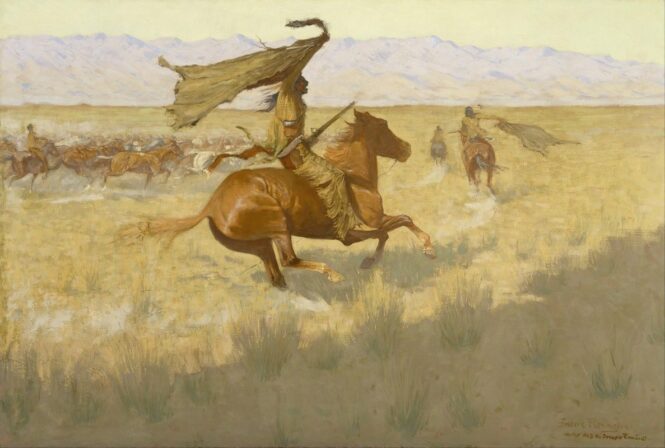
“The Stampede” is one of Remington’s most dynamic paintings. The scene depicts a herd of wild horses racing across the prairie, their manes and tails whipping in the wind. Remington captures the energy and motion of the stampede with bold brushstrokes and intense colors. The moonlight casts a pale glow over the landscape, illuminating the horses and the cowboys who are struggling to control them. The painting captures the thrill and danger of the American West, where men and animals alike had to be tough and resilient to survive.
The Old Stagecoach of the Plains
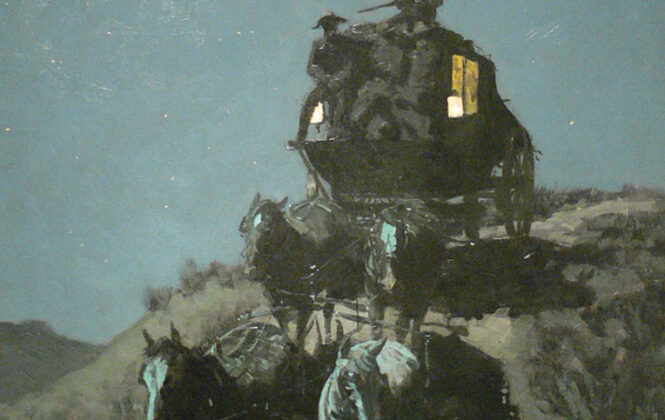
“The Old Stagecoach of the Plains” is one of the most famous Frederic Remington night paintings that capture the drama of life on the frontier. The painting depicts a stagecoach being attacked by a group of Native Americans. The scene is shrouded in darkness, with only the moon and the flames from the burning coach providing light.
Remington uses shadows to create a sense of tension and danger, with the attackers lurking in the darkness and the coach passengers huddled together for protection. The painting is a powerful reminder of the conflicts and struggles that characterized the settling of the American West.
The Scout: Friends or Foes?
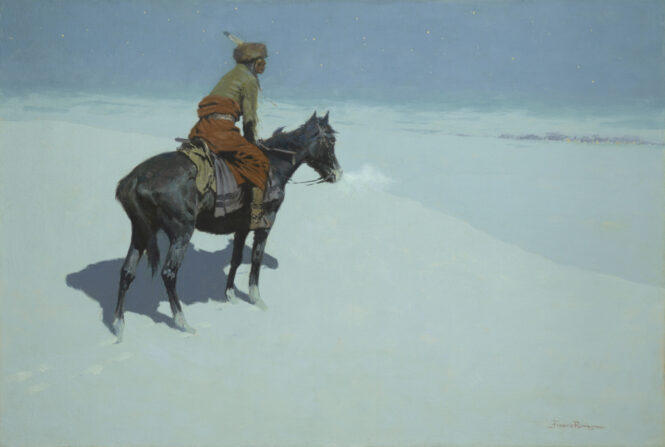
“The Scout: Friends or Foes?” is another of Remington’s night paintings that showcase his skill in capturing the drama of the frontier. This Frederic Remington art depicts a lone scout, his horse silhouetted against the night sky, approaching a group of Native Americans. The tension in the scene is palpable, with the scout’s gun drawn and the Native Americans watching him warily.
The moonlight provides just enough illumination to create a sense of mystery and danger, with the scout and the Native Americans both on edge. Remington’s painting captures the complexities and challenges of life on the frontier, where trust and betrayal were never far apart.
Conclusion
Remington continued to produce artwork until his death in 1909. During his lifetime, he created over 3,000 paintings, sculptures, and illustrations. While his work was popular during his lifetime, he achieved even greater recognition in the years following his death. Today, his works are celebrated as icons of American art and are highly valued by collectors.
Frederic Remington was a master of his craft, leaving behind a legacy of artwork that would influence generations of artists. The artist lived during a period of great change in the West, and his works capture the spirit of the time. From his birth in 1861 to his death in 1909, Remington was an important figure in the development of American art and culture.
 Imagup General Magazine 2024
Imagup General Magazine 2024
